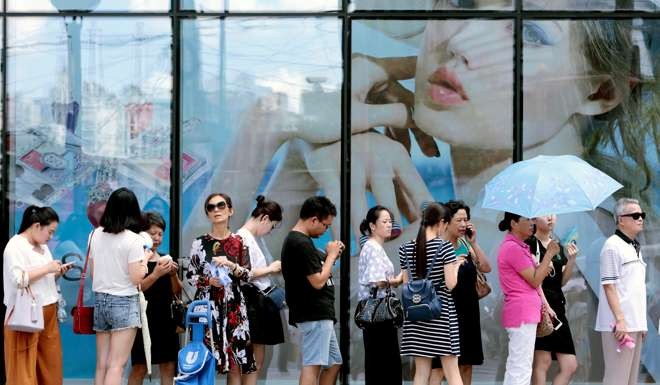
Mobile payment platforms showcase their services during 12-12 shopping splurge
Innovative internet-based consumer finance platforms extended to more offline businesses during latest shopping promotion

China’s consumer buying spree shifted to good old-fashioned, bricks-and-mortar stores this week, but with a very modern twist, as the country’s mobile payment service providers offered preferential ways to pay at the tills during the “Double Twelve” shopping carnival.
After record numbers spent during last month’s Singles’ Day, on November 11 – US$17.8 billion in sales for Alibaba’s online marketplaces in just 24 hours – which was dominated by online shopping, the December 12 equivalent is something of a sequel but is focused purely on offering in-store bargains.
Industry sources suggest over the past three years, the number of physical stores participating in the 12-12 festival has gone up from 20,000 to a million across China and overseas.
But paying for goods has never been easier, say experts.

“Instead, some small merchants and physical stores took advantage of ever-more sophisticated mobile payment methods of to lure consumers.”
Alipay, the payment tool of Alibaba’s financial affiliate Ant Financial, for instance, launched a promotion from Saturday to Monday (December 10 to 12), offering discounts or coupons to its users.
Around 1.5 million shop owners signed up for the offer, in more than 400 cities, Alibaba said.
WeChat Pay, the payment service of internet powerhouse Tencent Holdings, also launched similar “gift money” when shopping at stores from supermarkets and convenience stores to pharmacies.
China bank card association China UnionPay also got in on the act, by launching payments by scanning QR codes for the first time on December 12, in an effort to catch up with its payment rivals.
Alipay said 110 million users paid for in-store purchases during the three-day promotion, and many of them also used Koubei, an online-to-offline local services platform under Alipay, to actually locate merchants participating in the campaign. Alibaba owns the South China Morning Post.
Tim Lee Ying-ho, co-founder of the mobile payment start-up QFPay, said mobile payment providers were using the shopping event to not only showcase their services, but underline that traditional retailing is very popular.
“Offline sales are still much bigger than online e-commerce. While the room for growth in the online sales market is limited, companies like Alipay and WeChat Pay still need to search for fresh growth, and that comes in bricks-and-mortar shopping,” he said.
Alipay also said 68 per cent of consumers during the three-day promotion were in the post-1985 generation, suggesting older shoppers still enjoy the actual experience of buying in-store.
Analysts said consumers can expect to see a lot more innovative shopping events in future as the leading players, both in terms of payment and products, scrap for market share.
Live-streamed videos by bloggers and merchants on e-commerce platform Taobao.com, for instance, was once again used as promotional tool during “Double Twelve”.
Alibaba’s chief executive Daniel Zhang said platforms that manage to integrate e-commerce, entertainment and mobile media, would benefit not only sales but also help interact and attract a wider range of customer.